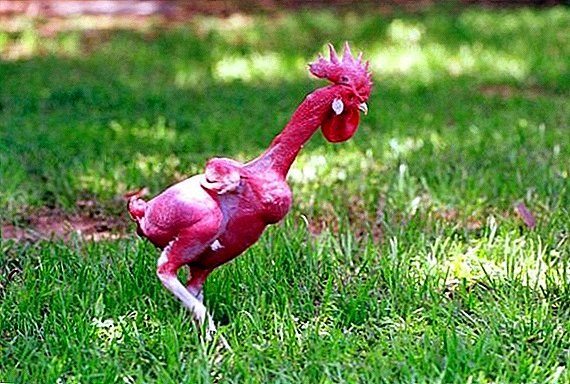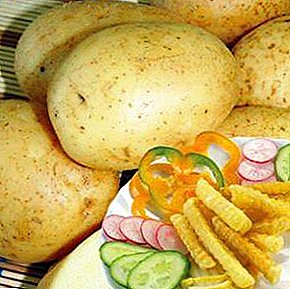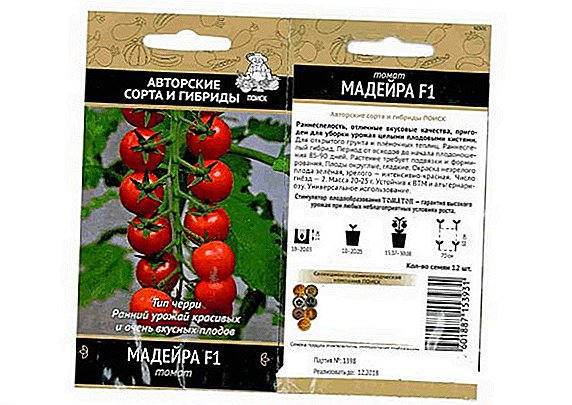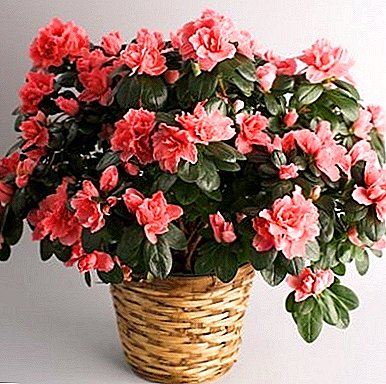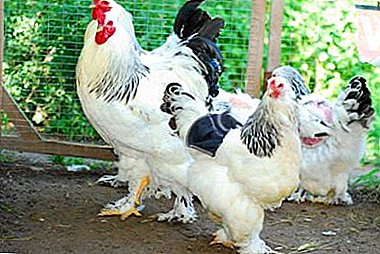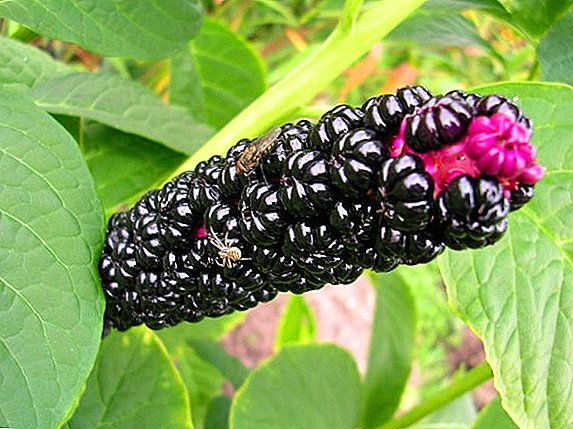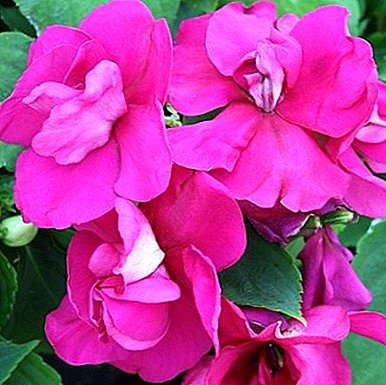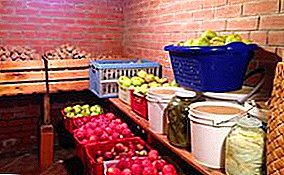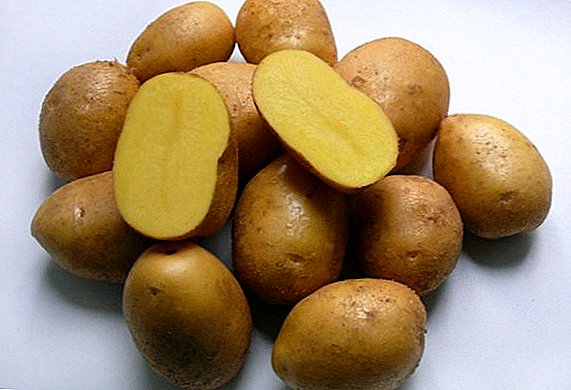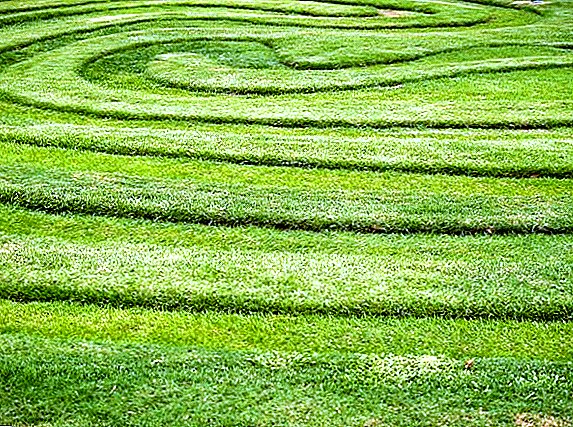 Lawn - a plot of land with grass covering, created by sowing specially selected seeds of various herbs, which is an element of landscape design.
Lawn - a plot of land with grass covering, created by sowing specially selected seeds of various herbs, which is an element of landscape design.
Grass features for lawn
 Lawn grass - The proportion of grass seeds designed to make lawns, developed by specialists. Selection of these seeds was carried out for many years, and the required ratio was determined experimentally.
Lawn grass - The proportion of grass seeds designed to make lawns, developed by specialists. Selection of these seeds was carried out for many years, and the required ratio was determined experimentally.
The vegetation forming the lawn cover was developed in accordance with the conditions of a specific climatic and geographic zone, which allows the plants to adapt to the weather conditions characteristic of a particular region. An important advantage is that the lawn grass does not need to be sown every year, it is capable of tillering, that is, it grows independently and compacts the lawn cover.
Powerful turf protects access to weeds, which makes the lawn more uniform. Herbs and leaves for lawns are more elegant and have a smaller size, which makes the coating velvety, resistant to external influences and the ability to easily restore its original shape. It should be remembered that the number of herbs suitable for creating a lawn is small, and many species are unsuitable.
Therefore, when buying ready-made mixtures, you should immediately pay attention to the varieties that are included in their composition. Neither the harsh winter temperatures nor the summer heat should pose a danger to such a herb, and we should not forget about proper care.
Lawn types
There are different types and types of lawns, among which parter, ordinary, meadow, sports, Moorish and piece are especially distinguished, each of which has its own characteristics.
Parterne
Shady terrain and large amounts of moisture are harmful to the ground lawn. It needs regular sunlight, does not tolerate weeds, and also requires a haircut every 10 days. The area of the ground lawn should exceed the area of flower beds and flower beds, and it is extremely undesirable to walk and sit on it. In the summer, it should be protected from burnout, and in winter - from freezing, but despite this, this option is the best decorative lawn. It would be more correct to break the ground lawn in front of the facade of the house or in the center of a large garden, but the main criterion when choosing a specific location is good illumination. When preparing the area for a lawn, be sure to remove all foreign objects that may harm the grass root system. It should also be borne in mind that the provision of drainage reduces the risk of puddles even in the heaviest rains, and its absence leads to the formation of yellow spots on the grass and can cause rotting of the root system.
It would be more correct to break the ground lawn in front of the facade of the house or in the center of a large garden, but the main criterion when choosing a specific location is good illumination. When preparing the area for a lawn, be sure to remove all foreign objects that may harm the grass root system. It should also be borne in mind that the provision of drainage reduces the risk of puddles even in the heaviest rains, and its absence leads to the formation of yellow spots on the grass and can cause rotting of the root system.
Automatic irrigation will be indispensable if you install on the lawn invisible watering heads. For maximum disposal of the site from weeds (thistle, hogweed), it is necessary to loosen the soil to a depth of 25 cm. Digging is performed using a motor-block, after which the ground is loosened by a cultivator. The most effective way to get rid of weeds is to remove the native soil (it is necessary to remove 30 cm of old earth and apply rubble, sand and black soil in its place).
Other methods of weed control include mulching, freezing the soil and using herbicides.
For example, the application herbicide "Roundup", it is completely harmless to the soil and will easily solve the problem of weeds. The area is treated in dry weather, with precautionary measures: be sure to wear a gauze respirator and protective gloves. The proportion is 120 ml per 10 l of water. A week later, the plot again dig and re-spray. In order to prevent the growth of weeds along the edges of the lawn, their territory should be separated with rubble or small gravel.
 Meadow grass meadow - the main component of the parterne lawn, which needs alkaline and humus soils, although it is not bad for weakly acidic soils (the soil can be deoxidized with ground chalk) enriched with lime. Red fescuewhich also is a part of such lawns, feels the need for constant watering and will not grow well on heavy clay soil.
Meadow grass meadow - the main component of the parterne lawn, which needs alkaline and humus soils, although it is not bad for weakly acidic soils (the soil can be deoxidized with ground chalk) enriched with lime. Red fescuewhich also is a part of such lawns, feels the need for constant watering and will not grow well on heavy clay soil.
The best fertilizers for live carpet are nitrogen (improves grass color and quality) phosphorus (strengthens the vegetative organ, increases tillering) and potassium (increases the resistance of cereals to drought and disease). Top dressing is required regularly, but the first time it is applied to the soil 5 days before sowing.
Will be useful rolling (land preparation for lawn) and tamping soil. A smooth surface without tubercles and depressions is tamped down using a heavy hand roller (the procedure is performed only in dry weather), and after 10 days they are watered by sprinkling (moisture should penetrate not less than 25 cm deep into the ground) and sown.
Landing by hand, tractor or horse seeder is made either at the end of August or at the beginning-middle of May, when there is no risk of sudden frost. For the most accurate and uniform placement of grasses, before sowing, the area should be marked on mutually perpendicular zones up to 2 m wide. After sowing, seeds are buried in the ground with a rake, and then rolled a little with a manual roller.
Further useful to hold mulchingby mixing peat, sand and garden soil. This procedure will increase the fertile layer and protect against weed germination. Windless weather is ideal for planting a lawn.
 Watering partern lawn produced every evening, using soft water, and the best soil moisture contributes to aeration. In the summer the lawn is watered twice a day: in the early morning and in the late evening.
Watering partern lawn produced every evening, using soft water, and the best soil moisture contributes to aeration. In the summer the lawn is watered twice a day: in the early morning and in the late evening.
Haircuts parterny lawns are carried out by cylindrical lawn mowers with rotating knives attached to the spiral. For a large area, it is better to choose a lawnmower with a wide grip, which will greatly facilitate care, although there will be enough battery shears for small areas. The first mowing is carried out in spring, when the grass reaches a height of 8 cm.
Lawn mower is not dangerous for young shoots, on the contrary trampling during shearing increases the tillering of the grass. For the first time, they remove a little (one ends), but later they are cut when the height of the grass reaches about 5 cm. Regularly carrying out the procedure - excellent weed prevention. In addition, it also gives the lawn a well-groomed appearance and contributes to the formation of thick turf.
In lawn care, an important point is the timely cleaning of leaf litter, which causes grass debating under the snow and killing them in spring, as well as conducting autumn sanding, which improves the flow of air into the ground and eliminates it from weeds (the proportion of making sand per 100 m² is 0, 1 m³).
Ordinary lawns
 In the composition of the ordinary lawn prevails ryegrass - perennial and broadleaf grains, supplemented with impurities of bentholes or fescue. The growth processes of plants of this species, at any time of the year, are more intense than all the others, so the hairstyle should be carried out more often.
In the composition of the ordinary lawn prevails ryegrass - perennial and broadleaf grains, supplemented with impurities of bentholes or fescue. The growth processes of plants of this species, at any time of the year, are more intense than all the others, so the hairstyle should be carried out more often.
For an ordinary lawn, a place as lit as possible by the sun is suitable, although the soil needs to be improved through agrotechnical measures and the fertilization of the soil with microelements.
After that, it remains to level and tamp the surface of the prepared soil, water it well and fertilize it. Soil seed germination will be helped by soil temperature not lower than +8 ° C, as well as comfortable humidity and air temperature no more than +25 ° C.
There are different types of lawn sowing, but based on the presence / absence of special equipment, there are two main options among them: manually or with a special seeder. Seeds deepen into the ground by 0.5 cm, then press down with a roller. Seedlings cannot be completely buried, as they sprout in the presence of a sufficient amount of light.
 Having deepened the seeds, pour them in thin streams of water, but only very carefully so as not to wash them out of the ground. Fertilizers can be fertilized with phosphate, but only after the seedlings emerge and thin green threads appear above the ground, the first cut is immediately after the grass has been rooted and it reaches 5-7 cm.
Having deepened the seeds, pour them in thin streams of water, but only very carefully so as not to wash them out of the ground. Fertilizers can be fertilized with phosphate, but only after the seedlings emerge and thin green threads appear above the ground, the first cut is immediately after the grass has been rooted and it reaches 5-7 cm.
Important! The lawn is able to hold dust well (from 1 hectare it holds up to 60 tons).
Meadow Lawns
This type of lawn is designed for walking and rest. Mostly located in park areas and near residential buildings, creating beautiful meadows complemented by flowers. To obtain the desired strength of a meadow lawn, to those already growing, the necessary herbs are additionally sown. The purpose of meadow lawns is to highlight colorful landscapes against a background of trees and shrubs, as well as to create prospects for groves or to supplement the area near water bodies.  Mowing of a mature meadow occurs depending on the cultivation of bulbous plants on it and the desired height of the grass. The first haircut is carried out when the grass for a lawn rises to 8 cm, after which it is cut every two weeks to the same height.
Mowing of a mature meadow occurs depending on the cultivation of bulbous plants on it and the desired height of the grass. The first haircut is carried out when the grass for a lawn rises to 8 cm, after which it is cut every two weeks to the same height.
With the help of a garden shovel, it is necessary to periodically dig up weeds, but it will be possible to apply herbicides only six months after the growth of turf and a year after sowing the seeds. First mowing herbs are carried out after the last flower has flowered (if there are bulbous plants) or at the beginning of July.
To maintain a neat look, it is necessary to mow at least once a month so that the grass does not reach a height of more than 10 cm. The last mowing is done in September, for which a rotary mower is used.
Sports lawns
Basic grass for sports lawns - pasture ryegrass, white bent and cloverwhich tolerate loads well. Among all types of sports lawns, the features and characteristics of this variant of the lawn are among the most acceptable. It quickly returns elasticity, and its durability depends on the type of soil, drainage and the composition of the grass mixture. Sowing seeds for a sports lawn are performed taking into account the possibilities of their germination. To create a football field use meadow bluegrass and red fescue. The place that exerts the greatest load on the grass is the goalkeeper's area, and therefore the seeding rate in this zone should be increased.
Sowing seeds for a sports lawn are performed taking into account the possibilities of their germination. To create a football field use meadow bluegrass and red fescue. The place that exerts the greatest load on the grass is the goalkeeper's area, and therefore the seeding rate in this zone should be increased.
Rapid grass growth can be achieved by applying grass mixture of ryegrass and ryegrass. Good at times aerate the lawn in order to avoid overmoistening the soil will also be useful regular cutting and dressing with nitrogen.
On the tennis court, most often, growing meadow bluegrass or red fescue, as it requires a perfectly smooth and aligned surface, which will provide an accurate ball bounce from the lawn. Cut the grass should be low and regular (2 times per month).
Children's playground form Timothy grass, clover and rye grass. Timely fertilization and aeration of the lawn, cutting once every few weeks, sowing grass on damaged areas is the key to a presentable sporty lawn, the creation of which is better to postpone in mid-May to late September.
Moorish lawns
Moorish lawns are one of the most popular types of lawn landscaping. In its composition there are seeds of wild flowers and cereal grasses. Most often, manufacturers mix bright red oriental poppy, blue cornflower, meadow chamomile, echinacea, bluebells, large-flowered flax and nemesia. These flowers are good honey plants that, with their bright and fragrant inflorescences, attract both butterflies and bees.  You can also include bulbous species that bloom in spring: tulips, crocuses, daffodils, because they will create beautiful compositions with cereal grasses - thin bred, meadow timothy, ryegrass. The number of grass grasses should exceed the number of flowers (most often they take into account the proportion of 80:20). An ideal place for a Moorish lawn would be a small glade, flooded with sunlight, the gap between the trees, or the area along the border of the site.
You can also include bulbous species that bloom in spring: tulips, crocuses, daffodils, because they will create beautiful compositions with cereal grasses - thin bred, meadow timothy, ryegrass. The number of grass grasses should exceed the number of flowers (most often they take into account the proportion of 80:20). An ideal place for a Moorish lawn would be a small glade, flooded with sunlight, the gap between the trees, or the area along the border of the site.
Before autumn sowing, the territory is removed from weeds and dug 15-20 cm deep, and then fertilizers are applied, the soil is covered with manure 5 cm and then dredged again by 40 cm. The soil is rolled by a cylindrical tank filled with water.
Seeds are sown 2 weeks after preparation, or in spring: from April to June. They are brought in the moistened soil, having increased rate at manual crops by 10%. You can also mix the seeds, which will make the lawn multi-colored, or at the beginning of planting cereals, then the flowers, which will create some islands, which is also quite beautiful. Before planting, they irrigate the soil, after which the seeds are deepened by 5 mm. For 1 m², at least 50 g of seed is required.
 It is possible to plant large bulbous plants, filling them with places empty after annual plants, as well as supplement the composition with small crops, placing them in groups of 10 each. It is advisable to cover the ground with non-woven material for uniform seedlings that appear in one to two weeks.
It is possible to plant large bulbous plants, filling them with places empty after annual plants, as well as supplement the composition with small crops, placing them in groups of 10 each. It is advisable to cover the ground with non-woven material for uniform seedlings that appear in one to two weeks.
Moorish lawn is also prescribed a careful abundant watering and regular weeding, which will help avoid the appearance of a large number of weeds. First haircut carried out with the emergence of seedlings of cereals, while there are no flower shoots (as the grass does not overlap the flower growth). In the summer period, the piece lawn grows and blooms, as does the natural planting, but in the autumn time the planting starts, and it needs to be cut again (the height of the mowing should not exceed 12 cm). The frequency of further mowing is determined by the owner.
Did you know? Lawns have the ability to reduce the summer temperature by 3-4 ° C.
Piece lawns
The artificial lawn has quite good characteristics. It is characterized by practicality, endurance, versatility, aesthetics. He is a roll that is very easy to lay, just rolling on a flat stretch. For fixation, plinths and corners are used around the perimeter, and on large areas it is invisibly attached with brackets.
 The artificial lawn, unlike natural, is not erased, is not subject to influence of temperatures and is not afraid of a direct hit of a sunlight. With it, you can create a stylish element of the garden, arrange a balcony or a shop window.
The artificial lawn, unlike natural, is not erased, is not subject to influence of temperatures and is not afraid of a direct hit of a sunlight. With it, you can create a stylish element of the garden, arrange a balcony or a shop window.
There are two types of artificial lawn: with and without drainage system. Drain cover is suitable for breaking lawns in the open air (it will let water through and perfectly cope with the problem of water outflow).
Drainage-free options tend to retain moisture, so they are used indoors. Periodic total cleaning of the coating will help to preserve the original color and shape of the lawn, as well as increase its service life.
Important! Lawn effective produces oxygen than the same tree tops, because due to the constant shearing is able to more intensively form new shoots and leaves.
What is lawn grass
Grass for lawn is divided into several types.
By type of root system
According to the type of shoot formation and root system, grassy grass are divided into rhizomatous, rykhlokustovye, rhizomatous-rykhlokustovye and tightly kustovye.
 Tillering knot rhizomatous The grasses are shallow in the ground. The development of new root shoots begins horizontally below the surface of the soil, and sometimes several underground nodes are formed.
Tillering knot rhizomatous The grasses are shallow in the ground. The development of new root shoots begins horizontally below the surface of the soil, and sometimes several underground nodes are formed.
The underground stem at a certain distance from the node bends upwards, rises to the soil surface and forms a new plant with an independent stem and root system with root shoots.
These plants bloom and produce seeds. Regular vegetative reproduction allows you to save herbage for many years. Rhizome grass: fescue is red, bluegrass, marsh, alpine, white bent, meadow foxtail.
Have loose sprouts grasses, the tillering knot is also shallow, and the stem comes out, rising up at an acute angle and forming in the soil a tillering knot, on which buds reappear. They develop new shoots, re-emerging up the soil at a short distance from the old ones.
Under the ground only one tillering knot is formed, however, the development of underground shoots does not occur, while a loose bush is formed above the ground, which represents a large number of branches. To loose sprouts include meadow fescue, pasture ryegrass, common horse comb, etc. They do not form dense turf, but herbage is evenly closed. Reproduction occurs only seeds.
 Rhizome and ryhlokustovye Grasses create underground shoots of various lengths. From the underground part, which is bent upwards and gives a rosette at the bend, the development of new plants, growing in the bushy type, occurs.
Rhizome and ryhlokustovye Grasses create underground shoots of various lengths. From the underground part, which is bent upwards and gives a rosette at the bend, the development of new plants, growing in the bushy type, occurs.
From the buds, which are located in the leaf axils, rhizomes are formed, which form rosette areas at the bend.
The grasses form an elastic strong turf, and also form shoots of bush rosettes, which are interconnected by different rhizomes, as a result of which the underground roots grow evenly over the soil surface. These plants are bluegrass meadow, red fescue, ordinary vole.
Have tight-haired Herbs tillering node is located above the ground.A new shoot that develops from a bud is tightly bonded to an old one. At the same time, the roots of a new branch appear and grow. These plants look like dense bushes, inside which are dying parts, and at the edges are younger. Dense plants serve: sheep fescue, belous, fescue, some types of red fescue.
 Legumes refer to pivotal plants In the underground part of the core is formed, in the ground - escape. The main shoot is presented in the form of a root collar and is often shortened. New shoots grow from buds that grow on the root neck, and then form a shrub on the ground, resembling a friable cereal.
Legumes refer to pivotal plants In the underground part of the core is formed, in the ground - escape. The main shoot is presented in the form of a root collar and is often shortened. New shoots grow from buds that grow on the root neck, and then form a shrub on the ground, resembling a friable cereal.
All new bushes develop on one taproot, which with age more and more branches and thickens, penetrating deep into the ground. A separate shoot lives only one growing season, but in general, all plants belong to perennial: red clover, white, hybrid, blue, hoppy, yellow alfalfa, sown espartset, marsh dad.
By height
Based on the possible height of the grass, all lawn grasses are divided into 3 main tiers. In the upper there are grasses who love light. riding. They have little bush and form large, coarse leaves and stems. it narrow-leaved grain grass, wheatgrass, creeping blue alfalfa.
Grassroots herbs are in the lower tier. Their thin shoots reach a height of 70 cm, they bush intensively after mowing, they form a dense mass of shortened leaves and stems (bluegrass meadow, red fescue, horned ladies).
 Between grassroots and top grasses grow semi-upper. Available in their high shoots (from 70 to 100 cm), which form numerous short shoots, giving shrubs of medium thickness. Most of them grow quickly after shearing and have a tendency to good tillering.
Between grassroots and top grasses grow semi-upper. Available in their high shoots (from 70 to 100 cm), which form numerous short shoots, giving shrubs of medium thickness. Most of them grow quickly after shearing and have a tendency to good tillering.
This group can be attributed grassland ryegrass, meadow timothy grass, hybrid clover, etc.
By the duration of the life cycle
There are annual, biennial and perennial types of grass for lawns.
Have annuals Herbs complete development cycle takes place in the first year of life. When the seeds ripen, all ground and underground parts of the plant die off. This group includes annual ryegrass, bluegrass annual and others.
 First growing season two year olds grasses ends with the formation of roots, stems, leaves, and fruiting shoots on which flowers develop, fruits and seeds are formed in the second year.
First growing season two year olds grasses ends with the formation of roots, stems, leaves, and fruiting shoots on which flowers develop, fruits and seeds are formed in the second year.
After the seeds ripen, biennial plants (for example, multiflowered ryegrass or hopper alfalfa), finally die off.
Perennial herbs have the ability to grow and bear fruit for many years. Among them are grass and bluegrass.
Classification of grass mixtures
Grass mixtures have such species.
Fast
By fast include meadow fescue, meadow timothy grass, meadow bluegrass. Herbs grow well in moist soil, develop rapidly, and after a year produce luxurious green cover, although they are short-lived (to prolong life it is worth combining with other herbs).
Shadow
 To shadow plants can be attributed red pasture and ryegrass pasture, which feel great in dark areas and have a high resistance to trampling.
To shadow plants can be attributed red pasture and ryegrass pasture, which feel great in dark areas and have a high resistance to trampling.
Sunny
To withstand constant sunshine and drought can Sheep fescue, as well as meadow bluegrass and choke-like alfalfa.
Universal
The most universal is called polevitsu, which can be grown in frost, heat and drought, but it has a significant drawback - after mowing it slows growth.
What is better monogazone or travosmes
Monogazon grow well only with excellent illumination, quickly come to its original shape after mechanical influences, and also grow very quickly. Gardeners often have a choice: monogazone or grass mixtures and prefer to use grass mixture that is less demanding to care and conditions, copes with weeds better and is not so capricious in watering.
The best herbs and grass mixtures for growing lawns
 There are a number of criteria for cereal grasses: frost resistance, external decorative effect, developed root system, good rate of growing cover after mowing, ability to vegetative reproduction, adaptation to climatic conditions.
There are a number of criteria for cereal grasses: frost resistance, external decorative effect, developed root system, good rate of growing cover after mowing, ability to vegetative reproduction, adaptation to climatic conditions.
The best herbs can be called friars are thin, red fescue and meadow bluegrasswho are not afraid of temperature changes, withstand frost, form thick sod, are protected from weeds, and they can often be mown. In addition, they multiply rapidly by vegetative means.
Red fescue grows slowly, so the cover will appear only in the second year. However, building root system meadow bluegrass passes rather slowly, so it is more practical to choose a mixture in which it will be the main component. Bent thin - unpretentious and cold-resistant plant with a rich emerald hue.
Lawn mixtures may contain other herbs. For example, bluegrass oakwood, able to grow in partial shade, which saves the lawn from bald spots, but at the same time it does not tolerate movement and constant mowing. Bluegrass marsh - forms a beautiful cover and strong roots, but does not differ in durability (it can be combined with white vole or dog vole).
 Aesthetics add meadow fescue - fast-growing grass, forming a thick carpet. Has excellent growth perennial ryegrassas well as unpretentious and refined bluegrass one year old. Hummocks form sheep fescue and pike soddy, therefore undesirable for lawns.
Aesthetics add meadow fescue - fast-growing grass, forming a thick carpet. Has excellent growth perennial ryegrassas well as unpretentious and refined bluegrass one year old. Hummocks form sheep fescue and pike soddy, therefore undesirable for lawns.
Lawns retain their original shape and elasticity, mimic the look of real grass, without requiring extra-complicated care, which makes them an excellent solution to the problem of arranging a backyard plot.
Did you know? With the help of grass mixtures you can create drawings and accents on the relief of the site.


